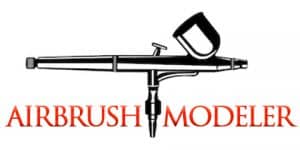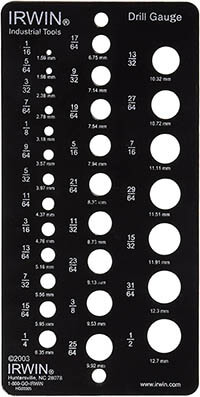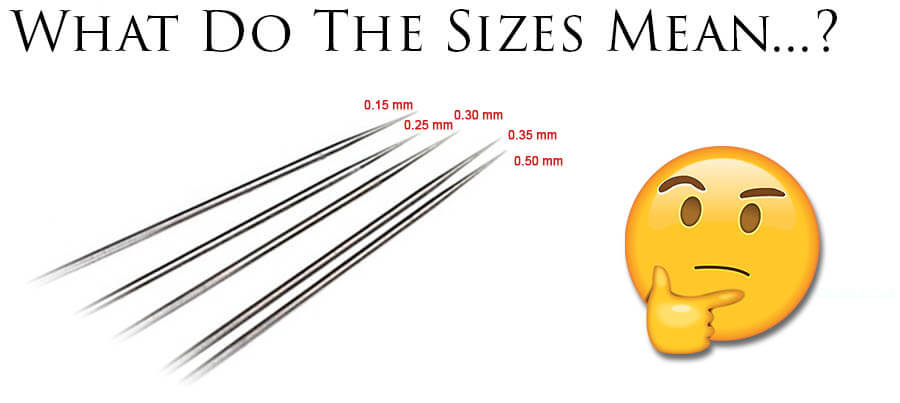
Airbrush Needle Size Explained
Different airbrush needle sizes determine the amount of paint that can be sprayed from the airbrush, with different needle sizes lending themselves better to different applications or jobs such as fine detail work with the smaller needle sizes or excellent large-area coverage with the larger needle sizes.
A specific airbrush needle size will go hand in hand with a corresponding specific nozzle size so that the opening of the airbrush can properly accommodate the needle size perfectly.
What Size Needles Do Airbrushes Take?
Airbrush needles typically vary in size from 0.1mm to 0.5mm.
The smaller airbrush needle sizes (0.1 to 0.2) will lend themselves much better to fine detail work, and the larger needle sizes (0.4 to 0.5) will allow much better large-area coverage.
The mid-range needle sizes (0.3 to 0.35) are all-rounders that provide good capabilities for reasonably fine detail work and also moderate large-area coverage, and given their flexibility are usually excellent options for beginners as well as the casual hobbyist airbrush user.
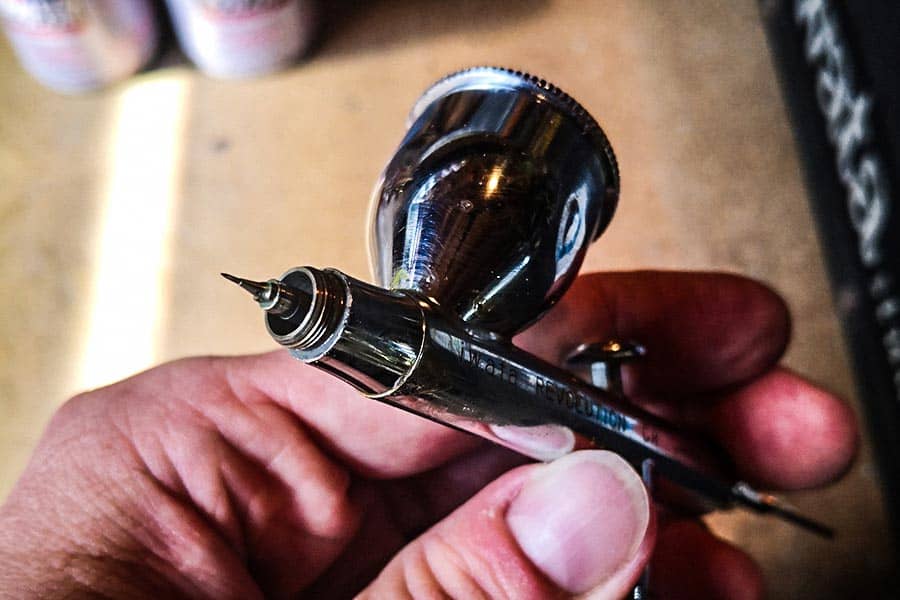
Why Would I Want To Change The Needle Size?
There are three reasons you would want to change your airbrush needle size:
- To allow a greater volume of paint to be sprayed (i.e. thicker needle) so that you get better coverage in a shorter time frame. This would be beneficial in a scenario where you do not require fine detail work but, rather, you are trying to cover a large area that’s generally flat (modeling example: 1/24 scale car body, 1/32 scale military jet, etc). Just ensure that you don’t lay the paint down so thick that you get runs; or
- You would use a smaller needle if you wanted to do finer detail work with your airbrush, such as pre-darken (or pre-shading) panel lines on a military jet model; or
- To allow for thicker or more specialised paint to flow more easily. This can include anything from primers through to some metallics. In these situations, and assuming you have the capability and equipment to do so, it’s often best to test different needle sizes by trialing thicker needle and nozzle sizes with the thicker primer or paint (and associated level of thinning) you plan to use to get a feel for what works best.
👍 For a highly detailed step-by-step process on how to properly thin your paints and set the best air pressure for airbrushing check out this in-depth article.
How Do I Tell Which Airbrush Needle Size Is Best For Me Personally?
If you want to do fine detail work entirely stick with a small needle and nozzle set of no more than 0.2 mm, or if you only want to cover large areas then stick with a larger needle of 0.4 mm or bigger.
However if you want to cover all detail and large area ranges but not specialise in either one of them (which is usually perfect for more airbrush users) then go with a 0.35 mm needle and nozzle.
To help you distinguish which airbrush needle size will give you the best result for your painting job, check out the handy table and explanations below for a quick overview of effects that different sized needles will have on your spray work…
NOTE: as mentioned earlier, needle size goes hand in hand with nozzle size, and for all intents and purposes these two terms are virtually interchangeable given their sizing will always match.
👍 Related: What Airbrush Nozzle Size Should I Use?
Airbrush Needle Size Chart
| Needle Diameter | Best Usage Application (With Scale Model Examples) |
| 0.15mm or less | Used for very fine detail painting and effects. Can often be the most expensive needles. Fantastic for artists and applications that require super fine details but not commonly used in scale model building. EXAMPLE USE: any artistic work that is extremely finely detailed. 👍 Full instructions on exactly how to airbrush fine details and lines! |
| 0.2 to 0.25mm | Still provides a very fine spray pattern, and would likely be the smallest needle size you would want for scale model painting. For artistic work this may be a better ‘detail’ needle size unless you need to do super-fine paintwork. EXAMPLE USE: pre-shading of panel lines on a military jet model or panel edges on a tank. |
| 0.3 to 0.35mm | General purpose painting where fine detail is not required, but rather an excellent capability range to handle good quality detail work as well as decent large area coverage. For modelers, you may use this needle size for full coverage base coating and top coating of kit parts that are not overly large. EXAMPLE USE: priming or top coating a smaller scale armored vehicle, engine parts of a 1/12 scale motorcycle. |
| 0.4 to 0.5mm | One of the most popular needle sizes along with the 0.3 to 0.35 mm needle, the 0.5 mm lends itself very well to priming and top coating of medium to large kit parts. The ability for fine detail work is not exceptional, although with significant practice and very precise thinning and air pressure control some fine detail work can be well executed by experienced airbrush users. EXAMPLE USE: general model painting, painting a 1/32 military jet, or a large scale naval vessel hull, high-gloss top-coating of a 1/24 scale car model |
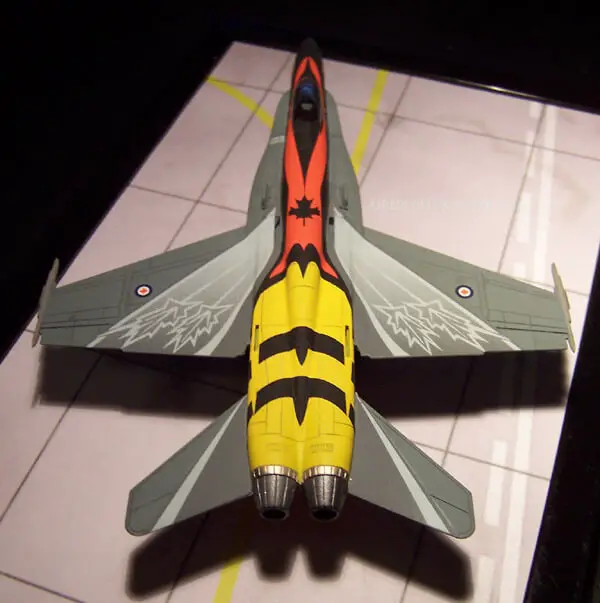
That’s Great BUT… Real World Application Of Needle Sizes
Often times an airbrush will only come with a single needle, usually being on the larger side, typically 0.35 to 0.5 mm.
If you’re just starting out and making your way up the learning curve you won’t be required to do any kind of fine detail work very often, with this kind of work only being a requirement, for example, if and when you decide to tackle something like a complex camouflage pattern on a small military vehicle or jet model, or fine detail creative artwork.
The reality is that you will be perfectly fine for the vast majority of the airbrushing work you do using the single needle that came with your airbrush kit.
Having said that though, there is one situation outside of fine detail work that you may wish to utilise a finer needle, and that’s to reduce the amount of paint you spray onto very small parts or canvas areas so that you don’t drench them and lose detail or cause a run/paint-blob on them surface.
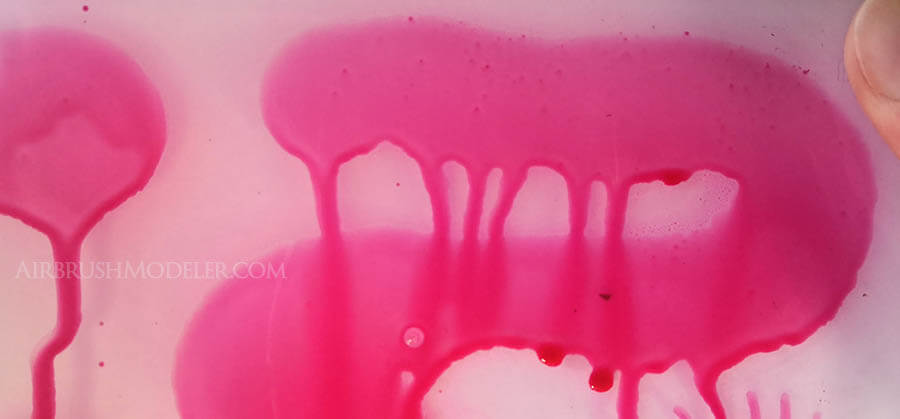
If you have a dual-action airbrush that allows you regulate the volume of paint that comes out largely irrespective of the air pressure, then you’ll be able to achieve a smaller paint flow yourself to a reasonable degree, but this isn’t always the most ideal solution to the problem of paint runs.
👍 If you’re after more detail on how to use a double action airbrush complete with step-by-step instructions and picture examples check out this detailed article.
This is because, when doing fine detail work, it’s incredibly easy to accidentally allow too much paint to flow and you’ll extremely quickly drench your tiny part or canvas area in far too much paint, forcing you to basically start over which is never fun.
For this reason, if you know you’ll only be painting small parts or tiny areas and are in the market for a new airbrush, then choosing one that ships with a small airbrush needle, in the order of 0.2 to 0.25 mm, may well be the way to go.
In actual fact, a skilled airbrusher using a dual-action airbrush can often achieve fine detail work to similar degrees using completely different and larger needle and nozzle sizes, but the larger needles can be very unforgiving if you allow too much paint to flow to quickly.
👍 For more information on exactly how to paint fine lines and small details using an airbrush check out this in-depth article.
How Do I Choose The Best Airbrush Needle To Get If I Want To Go Bigger Or Smaller?
Choosing your next airbrush needle size is a matter of assessing your current airbrush needle performance and figuring out where it is letting yo down, and moving towards a needle size that will rectify that problem, as will be discussed in more detail in the points below.
Note also that expanding your options for needle and nozzle sizes will give your creative artwork and model building greater flexibility and potentially better results.
It should be noted that some airbrushes will allow you to change the needle and associated nozzle size, but this will not always be the case.
Check with the manufacturer of your particular airbrush brand to see if your airbrush model has options and accessories that allow for needle size changes, otherwise you can pick up new airbrushes for very reasonable prices that have different needle and nozzle sizes, and will allow you to greatly expand and improve your airbrushing skills and results.
How To Choose The Right Airbrush Needle Size:
A 0.5mm needle size is a great choice if:
- Your airbrush came with a 0.35mm needle or smaller, which is quite common, and
- You want to paint larger model surfaces more quickly and easily, potentially giving you a better quality finish over large areas.
A 0.3mm to 0.35mm needle size is the most versatile and this is where you can start if:
- Your current needle is between 0.4mm and 0.5mm, and
- You don’t need to do any super fine detail work.
A 2.0mm to 0.25mm needle size for finer work is an option if:
- Your current needle is 3.0mm or larger, and
- You need to do very fine airbrush work – this is an excellent place to start
HELP, I Mixed My Needles Up! How Do I Tell What Size An Airbrush Needle Is?
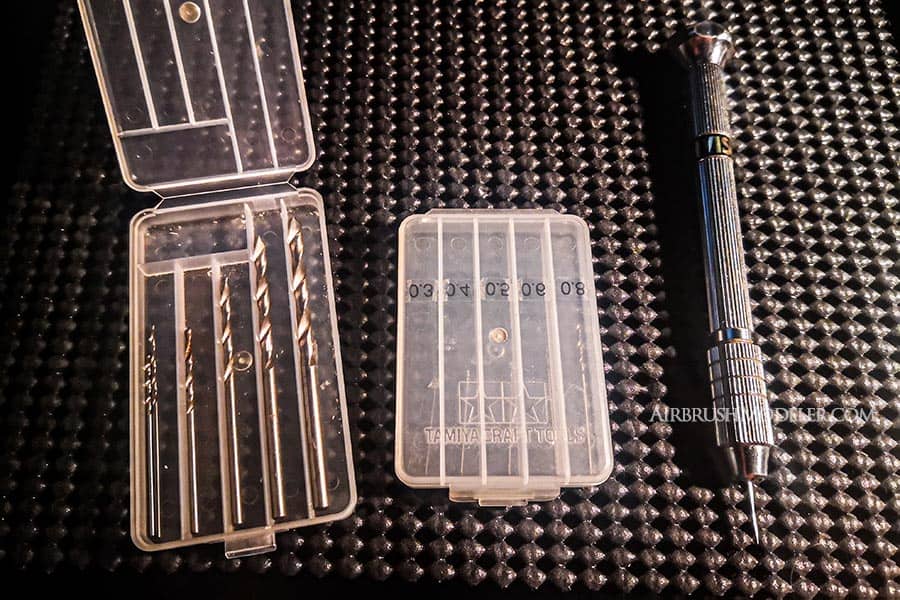
When you buy an airbrush kit or separate new needle it will be clearly marked on the packaging, but what if you mix up your needles and don’t have them in their original packaging anymore…?
For airbrush needles that come in sets they will sometimes be marked with one, two or three engraved rings at the end of the needle corresponding to fine, medium and large paint patterns.
This, however, will not necessarily tell you the exact size of your needle, it will only give you the generic measurements of fine, medium and large.
If your brand of needle(s) does not have these markings (and you do not keep them in packaging that denotes their size) you can use a couple of other methods as follows:
METHOD 1
Use a drill bit sizer, or if you have a pin vice, compare your pin vice drill bits which come in marked container or packages with your airbrush needle.
👍 See prices and reviews of drill bit sizers here.
METHOD 2
Use a digital caliper or micrometer to confirm the size.
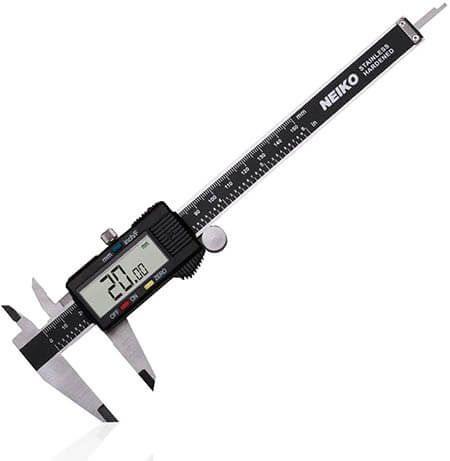
👍 See prices and reviews on micrometers and digital calipers here.
Final Thoughts On Airbrush Needle Sizes
At the end of the day it’s amazing how much difference a smaller or larger airbrush needle and nozzle combination can actually make to the flow and distribution of paint relative to the job you’re doing.
So grab yourself a new needle and nozzle size if your airbrush will handle it, or even grab a different airbrush to test, then find something disposable to paint or a scrap model kit as the guinea pig part, and start testing to see what you can do, you might surprise yourself! 👍
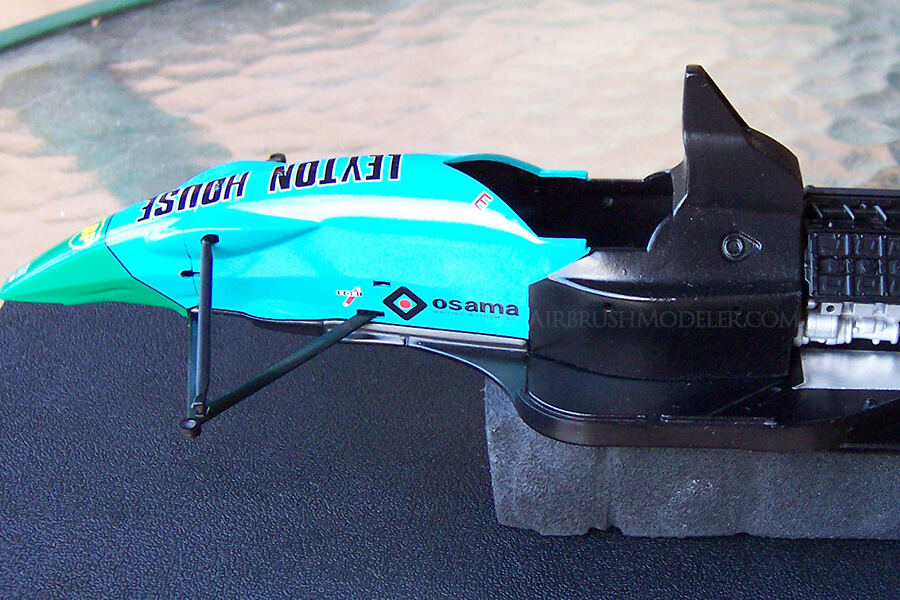
Learn exactly what different airbrush needle sizes do and how different needle sizes can improve your airbrush work!
